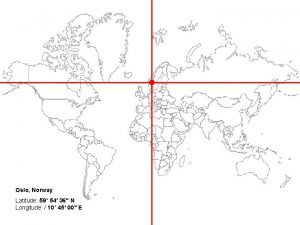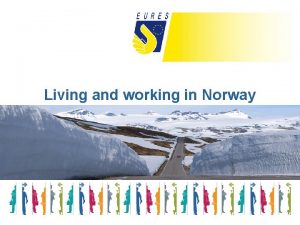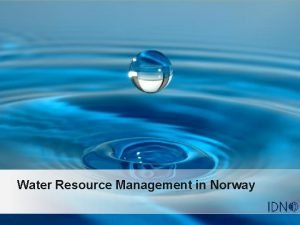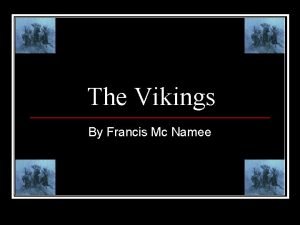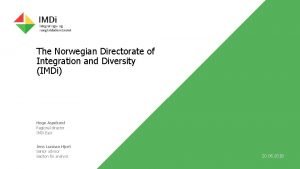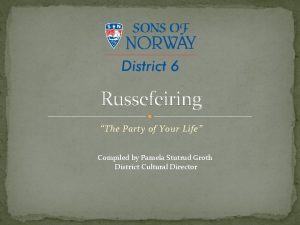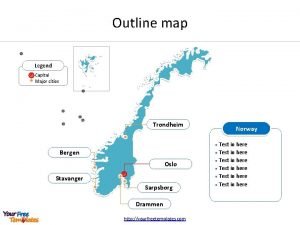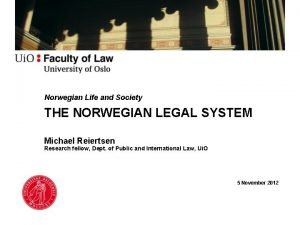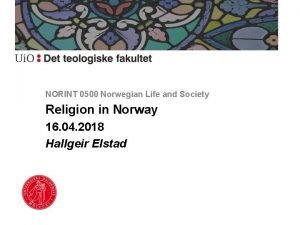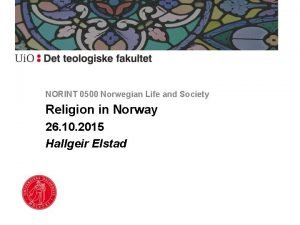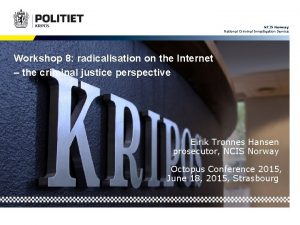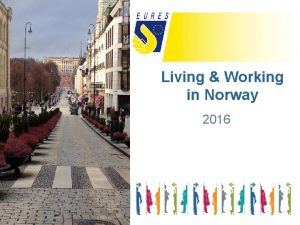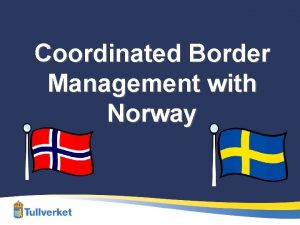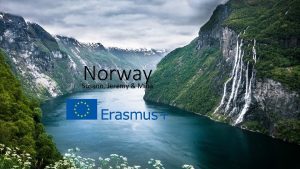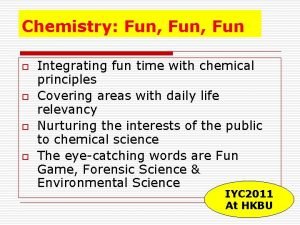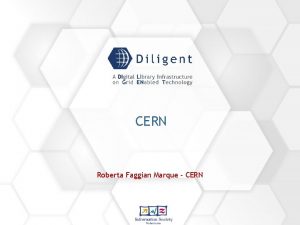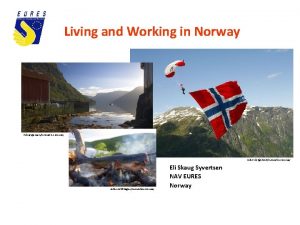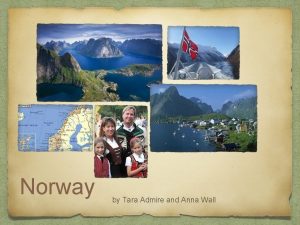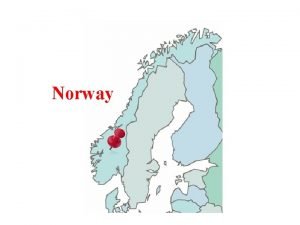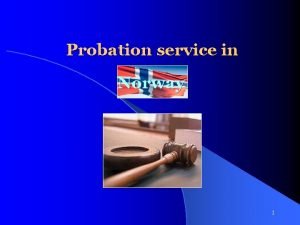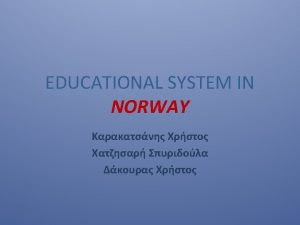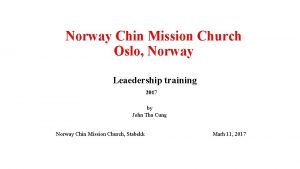Norway and CERN n n n Norway fun













- Slides: 13

Norway and CERN n n n Norway fun facts University system and numbers CERN users, staff and fellows Project resources (in general) Some key developments since 2009 Summary S. Stapnes (A. Read) R-ECFA visit to Norway U. Oslo, 2 October 2015

Norway fun facts 1960 2010 Norway contributes ~2. 6% of CERN membership fees (180 Mkr in 2011)

University education in Norway n Bachelor (3 y), Master (2 y), Ph. D (3 -4* y) n Numerous University Colleges, some with good technology programmes Ui. O+Ui. B produce around 300 -400 Ph. D/year (*) 4 yr with 25% teaching duty (typical) n n

Ph. D education n 4 years (8 semesters FTE) n n n 1 year teaching (2 semesters FTE) Formal courses (30 st. p, 1 semester FTE) * Author qualification 80 days (1 semester FTE) Research * and OTP (shifts and/or other service) (4 semesters FTE) All this multi-tasked More on this tough life in Steffen Mæland’s talk end of the day

Physics students – 1 st choice BSc Places (2015) 2011 2012 2013 2014 2015 Ui. O (*) 90 120 116 155 179 207 NTNU 50 70 85 89 75 113 Ui. B 45 45 46 60 57 54 (*) Physics, Astronomy, Meteorology

High Energy Physics in Norway Blue: Oslo, Bergen, Trondheim: Traditional Universities, the two first with experimental particle physics groups Red: New Universities or University Colleges currently involved at CERN (offering up through master level). Some also involved in the ATLAS/ALICE experiments. Supply, with NTNU, all technical students at master level (10 -12 yearly) Today (2014) around 140 Norwegian researchers, engineers, postdocs, Ph. D students and master students are involved in the CERN activities: q At CERN: Around 15 technical students at CERN in addition to the Norwegian staff (10 -12 at master and ~5 Ph. D level) q Around 90 Norwegian researchers (of all categories above) are registered as users travelling frequently to CERN q The rest travel less frequently or work in Norway within the CERN-related research programmes

CERN users (2014) CERN: 13 staff, 4 fellows

CERN Teacher Programme

Resources and programme n Universities supported by Research Council (RC) grants, the three main ones (ATLAS, ALICE, “Technology”) covering for now 2012 -19 n n n Ph. D grants from universities crucial Typically 50 -50 financing, migrating towards 70 -30 (RC-U) Additional smaller projects (also the RC or FP 7/Horizon 2020 or other type of grants) – accelerator R&D, ISOLDE, AEGIS, etc All presented in the following talks Technology Project – CERN exploitation: Links to CERN master (next slide) or Ph. D programmes (Adli later), and covers also ILO/TTO (Nordahl later)

Technical Students n n n The Norwegian Technical student program is currently very successful with 1012 bachelor/master students at CERN every year – from institutes outside traditional HEP/NP providing access to CERN from “everywhere” From an initial investment of support for 3 -4 months the students are typically extended by CERN to 12 months, and even 14 months in some cases. The monthly cost is 3414 CHF The two Norwegian CERN staff members who have been doing most of the work have been Jens Vigen and Nils Høimyr, and they are willing to continue to promote the program. Jens Vigen leads the sub-project. n Focus mainly on areas where we have Norwegian activities and/or staff (order arbitrary): n CLIC, AWAKE and accelerator technology in general, Information Technology, Information Systems, Technology transfer, Silicon sensors and electronics n These students are prime candidates for later Ph. D grants at CERN

Developments since last visit (2009) n n n n Staff in experimental particle physics (ATLAS and ALICE) renewed (Bugge, Stapnes, Løvhoiden, Skaali -> Sandaker, Roed, Postdoc) Staff increase in Nuclear Physics (Siem, Goergen) Increased activity related to astroparticle physics (see talks of Sandaker and Theory) Accelerator Physics (new position: Adli) Renewal in theory (Høgåsen, Eeg, Osland - > Raklew, Bringmann, Kersten) Permanent Researcher contracts (project-financed) Unfavorable exchange rate to CHF

Exchange rate to CHF 35% !! 01. 2006 01. 2009 01. 2010 01. 2012 01. 2015

Summary n Many positive developments but two main problems on the table: n n Financing of the LHC experimental upgrades, and without sacrificing all other parts of the programme The Norwegian staff numbers at CERN
